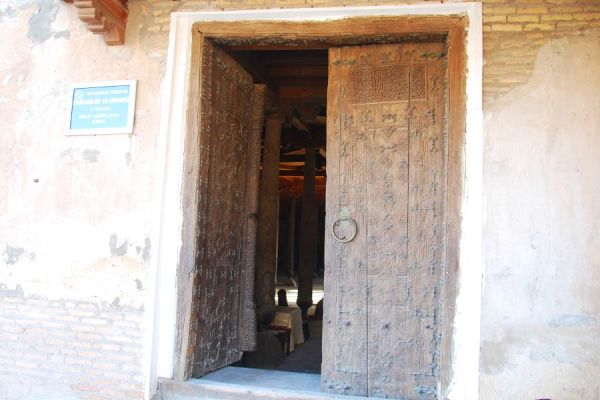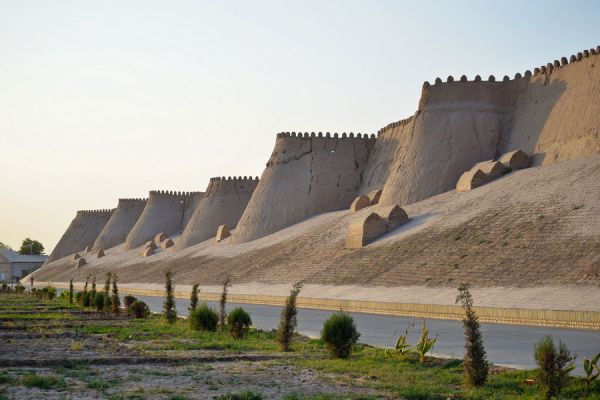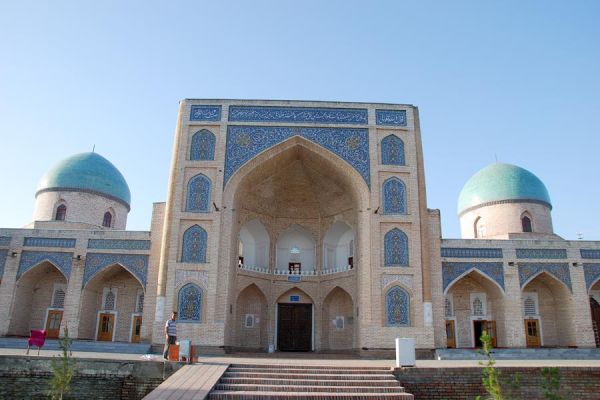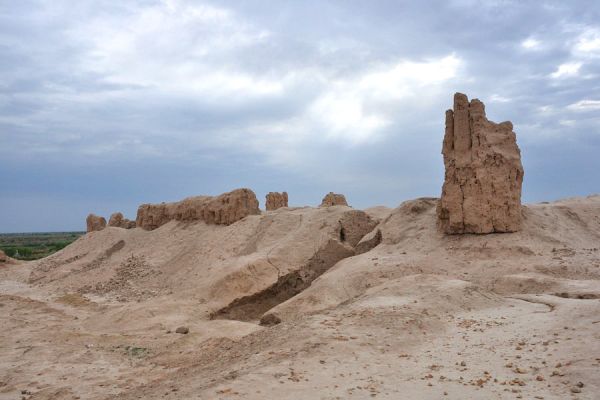Juma Khiva Mosque
The Juma Mosque, which means "Friday" (in honor of the day of special prayer), is the most significant prayer building in ancient Khiva, occupying an honorable position in the center of Ichan-Kala. Unlike traditional architecture, the building is devoid of domed ceilings, arches and visually highlighted portals at the entrance. This is a one-story building with a powerful wall, in which three entrance openings are made. This is explained by the fact that Abdurakhman Mikhtar, a close dignitary of the Khiva ruler, built new structures on the site of those that had previously existed in the tenth century. By order of the dignitary, the ancient architecture was faithfully reproduced as a sign of respect for the traditions of previous generations.
The only non-street of ancient Khiva, laid straight, without turns, connects the Kunya Ark fortress with the central entrance to the Juma complex. There is an artfully executed fine carving on the wooden door. The perfectly preserved door was decorated by Khiva craftsmen over seven centuries ago.
The room of the chapel tells about the art of woodcarvers in different historical eras. The prayer room is surrounded by columns totaling more than two hundred, the height of which varies, ranging from 4 to 5 meters. The columns serve as a support for the roof. By themselves, they represent a work of art, about twenty carry ornaments of the XI–XIV centuries, there are also more ancient ones dating back to the 10th century. Later works dating back to the 16th century, in imitation of ancient masters, are covered with a peculiarly flattened relief pattern.
The columns, which are surprisingly harmoniously combined with each other, actually have different origins. Some were transferred from the ancient buildings of Khiva, some belonged to the cult building located here earlier, there are also those that became war trophies in the campaigns of the Khan of Khiva. They are united by the high art of carving and bases made in the same style, depicting elegant jugs filled with flowering plants.
On the south side there are pointed arches with a single axis of symmetry, as if the smaller one were nested in the larger one. The openings in the roof, according to the number of entrances, let in a sufficient amount of light, which does not completely dispel the semi-darkness, but creates a unique mystical play of shadows and penumbra.
The Friday chapel and the central minaret of Ichan-Kala are a kind of starting point for exploring Khiva antiquities, from here it makes sense to start exploring local attractions.























